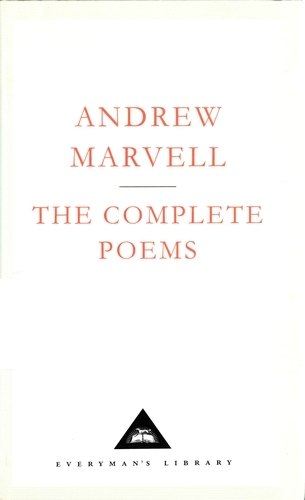Everyman's Library CLASSICS
242 books in this series
The finest editions available of the world's greatest classics from Homer to Achebe, Tolstoy to Ishiguro, Proust to Pullman, printed on a fine acid-free, cream-wove paper that will not discolour with age, with sewn, full cloth bindings and silk ribbon markers, and at remarkably low prices. All books include substantial introductions by major scholars and contemporary writers, and comparative chronologies of literary and historical context.
The Age Of Innocence
Edith Wharton's novel reworks the eternal triangle of two women and a man in a strikingly original manner. When about to marry the beautiful and conventional May Welland, Newland Archer falls in love with her very unconventional cousin, the Countess Olenska. The consequent drama, set in New York during the 1870s, reveals terrifying chasms under the polished surface of upper-class society as the increasingly fraught Archer struggles with conflicting obligations and desires. The first woman to do so, Edith Wharton won the Pulitzer Prize for this dark comedy of manners which was immediately recognized as one of her greatest achievements.
Decline and Fall of the Roman Empire: Vols 1-3
Easily the most celebrated historical work in English, Gibbon's account of the Roman empire was in its time a landmark in classical and historical scholarship and remains a remarkable fresh and powerful contribution to the interpretation of Roman history more than two hundred years after its first appearance. Its fame, however, rests more on the exceptional clarity, scope and force of its argument, and the brilliance of its style, which is still a delight to read. Furthermore, both argument and style embody the Enlightenment values of rationality, lucidity and order to which Gibbon so passionately subscribed and to which his HISTORY is such a magnificent monument.
Doctor Thorne
In the third novel of the Barsetshire series, Trollope continues his study of a small cathedral city and the surrounding rural community which he presents as a microcosm of nineteenth-century England. Through each of the Barsershire novels can be read on its own, the six together present an incomparable portrait of life and manners in the quiet but troubled heart of a great nation at the zenith of its prosperity. DOCTOR THORNE revolves round the characters of the doctor and his niece, Mary, but the complex social life of which they are a part, ranging in scope from great houses to poor cottages, is almost more important than individual characters. If God is in the details, these novels are indeed divine.
Heart Of Darkness
In a novella which remains highly controversial to this day, Conrad explores the relations between Africa and Europe. On the surface, this is a horrifying tale of colonial exploitation. The narrator, Marlowe journeys on business deep into the heart of Africa. But there he encounters Kurtz, an idealist apparently crazed and depraved by his power over the natives, and the meeting prompts Marlowe to reflect on the darkness at the heart of all men. This short but complex and often ambiguous story, which has been the basis of several films and plays, continues to provoke interpretation and discussion.
Nicholas Nickleby
Dicken's third novel, published in 1839, is a brilliant and vivid melodrama of honest youth triumphing over vice and injustice. Bursting with energy and populated by a whole world of inimitable and memorable characters - including especially the theatrical troupe with whom Nicholas performs - the book is both a griping story and a series of magnificent scenes. It is also indignant protest against cruelty and oppression, most memorably encapsulated in Dickens's powerful portrayal of Mr Squeers and his wicked boarding school - a passage which was to be instrumental in helping to reform the Victorian education system. The novel has been adapted for television stage and screen.
The Social Contract And The Discources
THE SOCIAL CONTRACT is one of three most influential treatises ever written (the others being PLato's REPUBLIC and Marx's DAS KAPITAL) Of the three it is safe to say that only THE SOCIAL CONTRACT is much read in its entirety today, and it continues to exert a direct influence on contemporary political thought. In it - and in the three DISCOURCES here printed with it - Rousseau discusses the nature of liberty, human rights and the state; the origins of private property the function of education; the economic structure of society; and the relationship between individuals and the community. This revised re-issue of G. D. H. Cole's celebrated translation, long published by Everyman, includes sections from the manuscript draft of the text and is accompanied by an extensive new introduction, chronology and bibliography prepared by Professor Alan Ryan.
The Awkward Age
The story of young Nanda Brookenham's struggle to preserve her honesty in the brilliant but corrupt world of her parents is a drama of innocence betrayed yet preserved. Written when James was recovering from the shock od failure as a playwright, THE AWKWARD AGE is one of his greatest masterpieces. Conceived like a play terms of scenes and conducted largely through witty dialogue, the novel bears the triumphant signs of his painful apprenticeship in the theatre
Crime And Punishment
Dostoesky's drama of sin, guilt and redemption transmutes the sordid story of an old woman's murder by a desperate student into the nineteenth century's profoundest and most compelling philosophical novel. Grim in theme and setting, the book nevertheless seduces by its combination of superbly drawn characters, narrative brilliance and manic comedy.
The Mayor Of Casterbridge
D H Lawrence remarked that Hardy's best novels were about 'the struggle into love and the struggle with love', and THE MAJOR OF CASTLEBRIDGE is no exception. One of the long series of Wessex tales include FAR FROM THE MADDING CROWD, it is the story of the brooding and sometimes brutal Michael Henchard and the women with whom he searches for happiness in the harsh world of the nineteenth-century rural England
The Complete Poems
The wittiest and yet most accessible writing in mid-seventeeth-century England, Andrew Marvell's poetry is both passionate and brillant, erotic and comic, cool courtly and seductive. The friend. admirer and supporter of Milton, Marvell was also a very great poet in his own right. Described by a contemporary as 'of middling stature, pretty strong-set, of roundish face, cherry-cheeked, hazel-eyed, brown-haired he was a man of the people and a brillant intellectual. The fact that he was both a republican and the admired favourite of Charles II indicates the breadth of his sympathies.
A Tale of Two Cities
This brilliantly coloured tale of the French Revolution is an historical romance set in Paris and London. Famous for the character of Sidney Carton who sacrifices himself upon the guillotine' it is a far, far better thing I do than I have ever done '- the novel is also a powerful study of crowd psychology and the dark emotions aroused by the Revolution, illuminated by Dickens' lively comedy
Madame Bovary
Described by Henry James as 'one of the first of the classics' and so regarded ever since, MADAME BOVARY has touched generations of readers and moulded generations of writers. The story of a little woman in a provincial town who dreams of happiness and then perishes by her own hand is worked up by Flaubant into a profound and heart rending study of human bondage.
Silas Marner
When the weaver Silas Marner is wrongly accused of crime and expelled from his community, he becomes a miser and vows to turn his back on the world. But an etraordinary sequence of events, including the appearance of a tiny child in his cottage, melts Silas's heart and transforms his life. George Eliot's tender pastoral is at once a realistic story of rural life and a symbolic drama of sin and repentance, Written in her simplest style, it paints a vivid picture of a rural life long since vanished.















